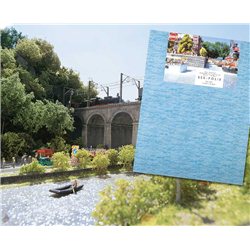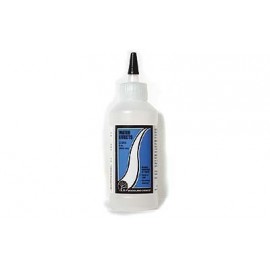You'll likely have come across the term "NEM pockets" when delving into the world of model railway couplers. But what...
No products
Product successfully added to your shopping cart
There are 0 items in your cart. There is 1 item in your cart.
Search Tips
What are my options for simulating running water on a layout?
There are several options for simulating running water on a model railway layout. Here are a few options to consider:
Static water: One option is to use static water as a starting point. Static Water is often modelled using a resin or silicone material that can be poured into a riverbed or pond area on the layout. Once set, it will give the appearance of still water. Details such as rocks or plants can be added when the silicone is poured in place as these will then appear to be in the watercourse. When set, a simple addition of acrylic paint colours can be applied to the surface to indicate a gentle water flow or current around these items.
Moving water: Another option is to create moving water using clear resin or silicone, which can be poured in layers to create a flowing effect. Some manufacturers will supply silicone-based products, especially for this purpose, such as "Realistic Water" by Woodland Scenics. This is a silicone gel that dries to a clear finish and can be moulded into different shapes. This can easily be used to simulate more turbulent and fast-flowing water, especially if this is applied in layers and with a suitable colour pigment to simulate the faster-flowing water.
LED lighting: It is also possible to use LED lighting to create the illusion of running water. By placing a strip of blue LED lights under a layer of clear resin, it is possible to create the illusion of flowing water in a river or stream. Additionally, it should be possible to adjust the brightness and colour of the LEDs to create the effect of a dynamic water flow.
Animation: For a more advanced option, it may be possible to use animation software and a projector to create a moving water effect on the layout. By projecting an image of flowing water onto a static water feature, it should be possible to create a very realistic effect.
Ultimately, this is ultimately a subjective issue for the Modeller in question and the method chosen will depend on the look and feel that an individual Modeller is trying to achieve and the level of detail they want to add to their layout.
Click here to receive the tips weekly in your mailbox. You can unsubscribe at any time.










